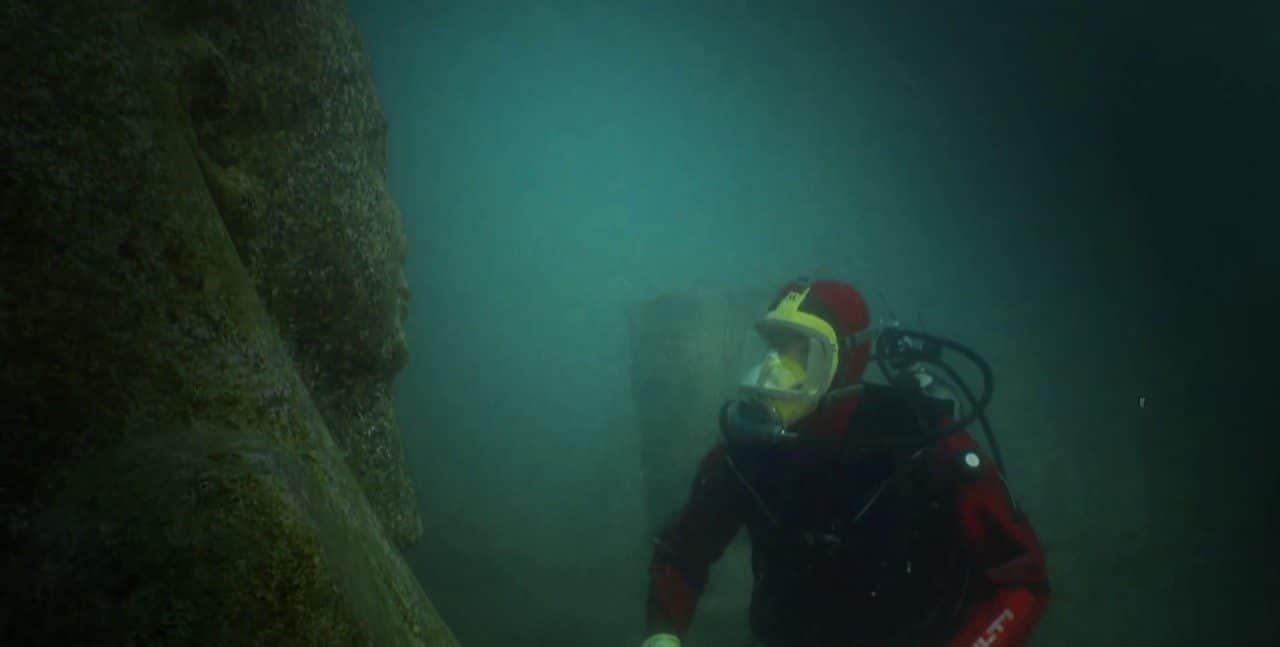After more than 2,000 years, the Lost City of Heracleion, which once served as Egypt’s principal harbor, was uncovered underwater in the year 2000. It has many ties to Ancient Greece and its mythological origins date back to the 12th century BC.

Archaeologists claim that the city, which had flourished as far back as the final days of the Pharaohs, was eventually destroyed because earthquakes, tsunamis, and rising sea levels damaged it over time.
The massive structures of Heracleion fell into the water at the end of the second century BC, most likely following a severe flood. During the Roman and early Arab eras, some of its residents remained in what was left of the city, but by the seventh century AD, the majority of Heracleion had submerged beneath the Mediterranean.
Many of its immeasurable treasures have since been exhumed from the murky depths to which they were sent and shown all over the world, giving us a look into the world of the Ancient Greeks and Egyptians.
The Lost City of Heracleion: Uncovering Egypt’s Ancient Harbor
Heracleion, also known as Thonis and also referred to as Thonis-Heracleion, was an ancient Egyptian port city on the Mediterranean Sea that was situated 32 kilometers (20 miles) northeast of Alexandria.
Its remnants are situated in Abu Qir Bay, just ten meters (thirty feet) of water, 2.5 kilometers off the coast. According to a stele discovered there, it was one city that went by both its Greek and Egyptian designations.
Heracleion experienced its heydays as the major port of entry into Egypt for the numerous ships arriving from all across the Greek world, long before Alexandria was even a glint in Alexander the Great’s eye.
Thonis was initially constructed on a pair of nearby islands in the Nile Delta. Canals with numerous distinct bays and anchorages cut through it. Ferries, bridges, and pontoons connected its wharves, spectacular temples, and tower homes.
In the Late Period of ancient Egypt, the city served as the nation’s primary port for foreign trade and the collection of taxes. It was an emporion, or commercial port.
Khonsou, the son of Amun, was known to the Greeks as Herakles or Hercules, and Thonis had a huge temple dedicated to him. Amun’s worship gained popularity over time. A massive temple to Amun-Gereb, the reigning god of Egypt at the period, was built in the centre of the city when it was at its height during the 6th and 4th century BC.
Rediscovering Heracleion: Archaeological Expeditions and Amazing Discoveries
The temple had numerous improvements in the fourth century B.C. under Pharaoh Nectanebo I. Heracleion’s temples honoring Osiris and other deities were known for their miraculous healing powers and drew visitors from all over Egypt.
The city was the site of the celebration of the “Mysteries of Osiris” each year during the month of Khoiak. These spectacular ceremonies involved a statue of the god transported in his ceremonial boat as it processed from the temple of Amun to his shrine in Canopus.
During the 2nd century BC just as the city was hit by the multiple disasters, the city of Alexandria, founded by Alexander the Great, superseded Heracleion as Egypt’s primary port.
Underwater explorer Franck Goddio and his team from the European institute for Underwater Archaeology, or IEASM, with the collaboration of the Egyptian Supreme Council, rediscovered the city after it sank into invisibility beneath the Mediterranean more than 2,000 years ago.
Since the Institute’s founding, Franck Goddio has served as its director. He devotes all of his time to studying underwater archaeology and disseminating the information learned via these discoveries through the writing of books and articles, as well as the planning of exhibitions.
Preserving the Past: Exhibiting Heracleion’s Artifacts in the Grand Egyptian Museum
The amazing discoveries Goddio made during the expedition are explained in detail on his extensive website. According to the webpage, “He has also solved a historic enigma that has puzzled Egyptologists over the years: the archaeological material has revealed that Heracleion and Thonis were in fact one and the same city with two names; Heracleion being the name of the city for the Greeks and Thonis for the Egyptians.”
On Goddio’s website, it is further stated that “the objects recovered from the excavations illustrate the cities’ beauty and glory, the magnificence of their grand temples, and the abundance of historic evidence: colossal statues, inscriptions and architectural elements, jewelry and coins, ritual objects and ceramics—a civilization frozen in time.”
A portion of the temple dedicated to Amun/Herakles, a gigantic red granite statue of the fertility deity Hapi, and a bronze figure of the ruler/god Osiris are among the valuable artifacts Goddio is in charge of unearthing and displaying to the modern world.
All of the items are currently housed in Cairo’s Grand Egyptian Museum.